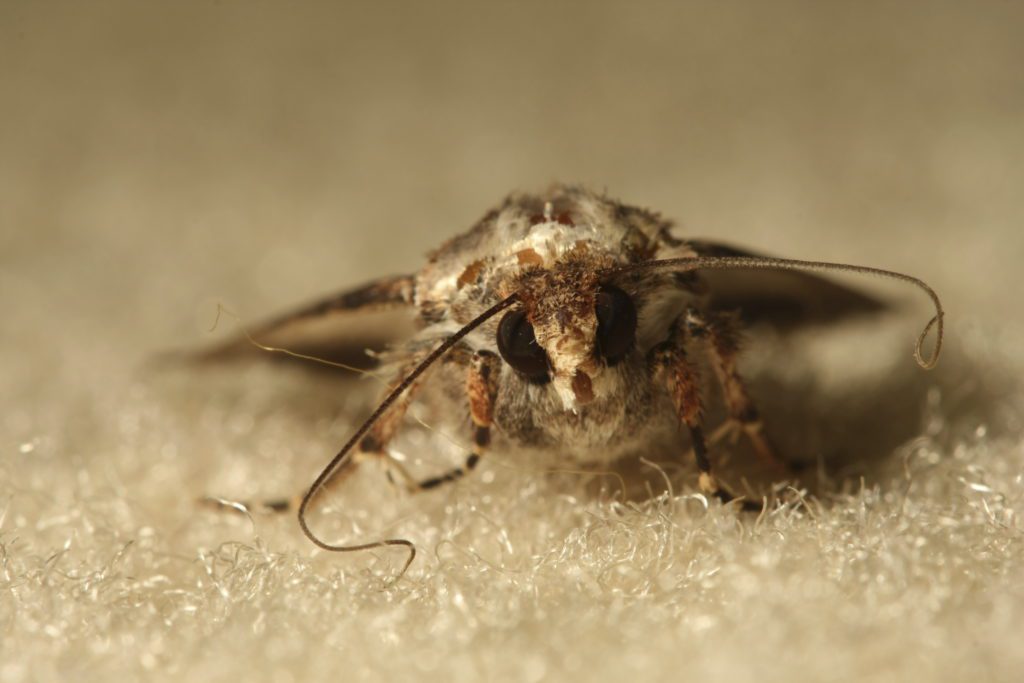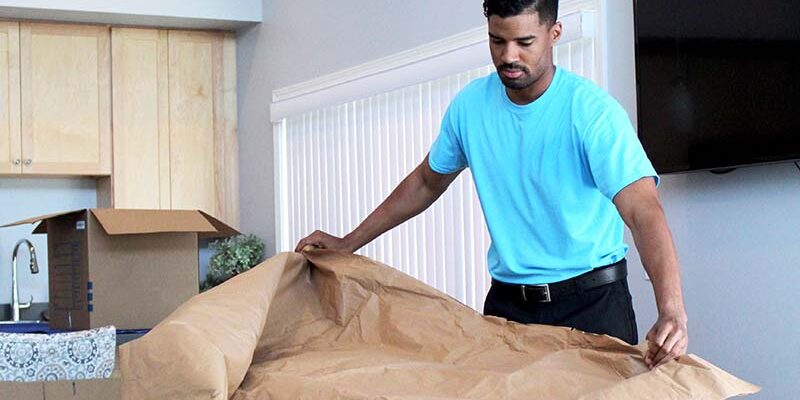Winged Invaders

Moth damage is making cleaning and wrapping rugs for storage a major liability for many rug washers.
As senior fellow of the Academy of Oriental Rugs, I get called in to consult or write appraisals involving rugs destroyed by moths after they were cleaned and wrapped. This results in insurance claims and or lawsuits by the rug owner, and sadly, the rug washer is almost always at fault. The problem is that moths, and particularly the moth eggs, are very difficult to kill, and washing does virtually nothing to hurt the eggs.
Meet pyrethrum
Most moth treatments are based on a natural chemical or a synthetic version of pyrethrum. Natural pyrethrum is made from the chrysanthemum plant, and the synthesized variety became common during the shortage that occurred during the “bed bug” crisis a few years ago.
Spray-on treatments use pyrethrum or a synthetic pyrethroid. When controlling a live moth larvae infestation, they do a great job. With application, all the larvae quickly die. But they are not effective in killing all the eggs.
Moth eggs can stay in a rug and hatch days, months or even years later. This is the danger: You treat the rug, and everything looks great, so you wrap it up and send it for storage. When the customer unwraps the rug, it is often too damaged to repair.
What about mothballs?
Mothballs, crystals or flakes only last a short period of time. With mothballs, you need to open the rug every three to six months, inspect the rug and apply more mothballs, which is, of course, impractical for longer term storage.
Won’t freezing kill the eggs?
Yes and no. For many years, the curatorial standard was to freeze the rug at minus 5 degrees Fahrenheit for 24 hours, but the new standard calls for five days at minus 40 degrees Fahrenheit. Most household, and even many commercial, freezers have a tough time maintaining minus 5 degrees Fahrenheit for 24 hours. But it takes very special equipment to maintain minus 40 degrees Fahrenheit. Additionally, to freeze it for five days really slows down production in any busy shop, even if they do have the equipment.
What about heat?
I knew someone who tried microwaving small rugs with promising results. But what never occurred to him was even new rugs sometimes have repairs, and bits of needles can be found buried deep in the foundation of rugs. He discovered this when a broken needlepoint sparked a fire in the microwave and burned a hole through the rug.
Wade Shehady, a fellow of the Academy of Oriental Rugs and one of the top rug restorers in the U.S., tells me that broken needles have been a problem for years, but the influx of Chinese needles is making this far more common than it was with the higher quality, German, steel needles or even British needles.
The solution
There is a safe and simple approach to preparing rugs for storage. My approach has a few basic steps that make preparing rugs for storage easy and profitable. The wash is a basic wash, and treating other problems, such as urine contamination or dye bleeding, is beyond the scope of this article.
The steps are as follows:
- Dye test the rug.
- Dust the rug thoroughly.
- Treat the rug with an antimicrobial.
- Wash with a low-pH surfactant.
- Rinse thoroughly.
- Treat with a magnesium moth treatment.
- Dry thoroughly. If you have a paddle moisture meter, it will do a good job of reading the moisture content in a rug. Any moisture left in the rug can contribute to dry rot.
- Bale, roll or fold the rug as appropriate and wrap in a waterproof, gas permeable wrap. Seal the packager with two- to three-inch-wide clear plastic tape. To do museum-quality storage, you can get acid-free, conservation-quality tubes to roll the rug so as to provide support and the highest standard of care.
- Add a picture of the rug with a description on the outside of the package, and wrap it with the clear tape to protect it.
Using an antimicrobial and making sure the rug is dry will protect the rug from dry rot. The key to moth control is the magnesium treatment. It renders the wool inedible to moth larvae so that if an egg survives and hatches in storage, the larvae will be unable to feed and will die from lack of nutrients.
Is the magnesium treatment safe?
Magnesium is actually good for you. This treatment is not all that different from another magnesium usage we all know — Epsom salt. If you never soaked your feet in Epsom salt, I bet your grandmother did.
To be clear, we should not eat or drink the magnesium treatment, but once it is applied to the rug and dried, someone would have to eat the wool of the rug to get any ill effect.
Isn’t this a lot of work?
The point is to charge for this service. This gives the highest level of care for a rug that is to be stored. But in addition to the profit, it protects you from angry customers and lawyers. I know of a San Diego, CA, area cleaner who just settled out of court over a moth-damaged rug his company cleaned and stored.
By far the most expensive part of this is labor. Cleaners are getting $2 to $5 per square foot on top of their cleaning fees. Overall, this protects us and makes a profit. Best of all, if you offer this and the customer turns you down, they cannot hold you liable for any damage that may result.
Barry O’Connell is a co-host and teacher for Rug Lover Marketing and lectures internationally on rug history and identification. He is a senior fellow with the Academy of Oriental Rugs and has worked as a contributor and editor on various rug-related publications, including the Encyclopedia of Modern Asia, and was a consultant to the Smithsonian Institution’s National Museum of the American Indian. He currently is editor and publisher for www.SpongoBongo.com and Oriental Rugs the O’Connell Guide.












